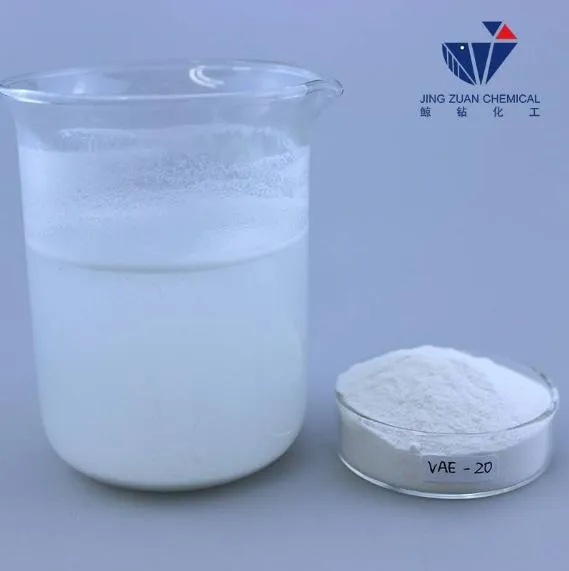
Dec . 11, 2024 17:09 Subira kurutonde
Factors Affecting the Price of Redispersible Polymer Powder
Redispersible polymer powder (RDP) is a critical component in construction materials, particularly for applications like tile bonding, wall putty, and cement-based adhesives. It offers enhanced performance in terms of bonding strength, flexibility, and workability. However, the price of redispersible polymer powder can vary based on several factors. Understanding these elements will help you make informed decisions when purchasing this essential material.

The Role of RPD for Tile Bonding in Determining Price
RPD for tile bonding is one of the most common uses for redispersible polymer powder. The quality and specific formulation of RDP required for tile adhesives can directly impact its price. Tile adhesives with higher RDP concentrations or special additives often result in better bonding strength, flexibility, and durability. These enhanced characteristics come at a premium price, as manufacturers need to source higher-grade polymers or invest in more advanced production techniques.
Moreover, redispersible polymer powder designed for tile bonding in specific environments—such as areas with high moisture or fluctuating temperatures—might require additional properties like water resistance or improved curing times. Such specialized formulations increase the cost due to the added complexity in production.
Influence of Wall Putty RDP on Cost Variations
The use of wall putty RDP in wall coatings and surface preparations is another key factor that influences the price of redispersible polymer powder. Wall putty RDP is typically formulated to improve the adhesion and smooth finish of putty mixtures, making it a vital ingredient in high-quality wall preparation. The inclusion of redispersible polymer powder in wall putty allows for better workability, smoother surfaces, and superior adhesion to drywall or plastered walls.
The price of redispersible polymer powder for wall putty depends on its ability to enhance these properties. Higher-quality RDP with better performance in terms of water retention, flexibility, and ease of application will command a higher price. The finer the particle size and the more advanced the chemical formulation, the higher the cost of production and, therefore, the price for the end user.
The Impact of Redispersible Polymer Powder Suppliers on Pricing
When purchasing redispersible polymer powder, the choice of suppliers can significantly impact pricing. The supplier’s production capabilities, sourcing of raw materials, and geographical location all play a role in determining the cost of the product. Established suppliers with a long history of manufacturing high-quality redispersible polymer powder may charge a premium due to their reputation for reliability and performance.
On the other hand, smaller or less well-known suppliers may offer competitive pricing to attract customers but might not have the same quality control standards or consistency in product performance. It’s essential to choose suppliers that offer a balance between cost and quality to ensure that the redispersible polymer powder you purchase meets the required specifications for your projects.
Additionally, the scale of the supplier’s operation affects price. Larger suppliers can offer more competitive prices due to economies of scale, while smaller suppliers may charge higher prices to offset production costs. It’s advisable to compare different suppliers to find the best deal for your needs.
Shipping and Delivery Costs for Redispersible Polymer Powder
Another important factor affecting the price of redispersible polymer powder is shipping and delivery costs. Because RDP is often used in bulk for large construction projects, transportation expenses can make up a significant portion of the total cost. The farther the product has to travel, the more expensive the shipping will be, especially if it needs to be imported from overseas.
Additionally, some redispersible polymer powder suppliers may offer bulk purchasing discounts or free shipping for large orders, helping to lower the overall cost per unit. For local suppliers, delivery times are generally quicker, which could be a more affordable option for smaller projects or urgent deliveries.
The Effect of Market Demand and Raw Material Prices on Redispersible Polymer Powder Price
Like any other industrial material, the price of redispersible polymer powder is influenced by the supply and demand dynamics of the market. Fluctuations in raw material costs, such as the price of the polymers used to make RDP, can directly impact the price of the finished product.
For instance, if the raw materials used to produce redispersible polymer powder become more expensive due to supply chain disruptions or increased demand, the cost of RDP will rise accordingly. Additionally, global events such as changes in manufacturing regulations, transportation costs, or the availability of raw materials can cause price increases or shortages.
On the demand side, an increase in construction projects, particularly in sectors like infrastructure, housing, and renovation, can drive up the need for redispersible polymer powder, pushing prices higher. Conversely, a slowdown in construction activity could lower demand and reduce prices.
The price of redispersible polymer powder can be influenced by a variety of factors, including the specific application (e.g., RPD for tile bonding or wall putty RDP), the supplier's production scale, shipping costs, and fluctuations in raw material prices. High-performance formulations with additional properties will typically cost more, but they deliver enhanced results in construction and coatings applications.
When purchasing redispersible polymer powder, it’s essential to weigh the performance benefits against the price and consider factors like product quality, supplier reliability, and delivery logistics. By choosing the right supplier and purchasing in bulk when possible, you can optimize your cost-effectiveness while ensuring that you receive high-quality products for your construction or renovation needs.
Explore our redispersible polymer powder offerings today on our website and take advantage of competitive prices, premium quality, and exceptional customer service. Whether you're looking for RDP for tile bonding, wall putty RDP, or bulk purchases, we have the solution for you.
-
Versatile Hpmc Uses in Different Industries
AmakuruJun.19,2025
-
Redispersible Powder's Role in Enhancing Durability of Construction Products
AmakuruJun.19,2025
-
Hydroxyethyl Cellulose Applications Driving Green Industrial Processes
AmakuruJun.19,2025
-
Exploring Different Redispersible Polymer Powder
AmakuruJun.19,2025
-
Choosing the Right Mortar Bonding Agent
AmakuruJun.19,2025
-
Applications and Significance of China Hpmc in Modern Industries
AmakuruJun.19,2025







